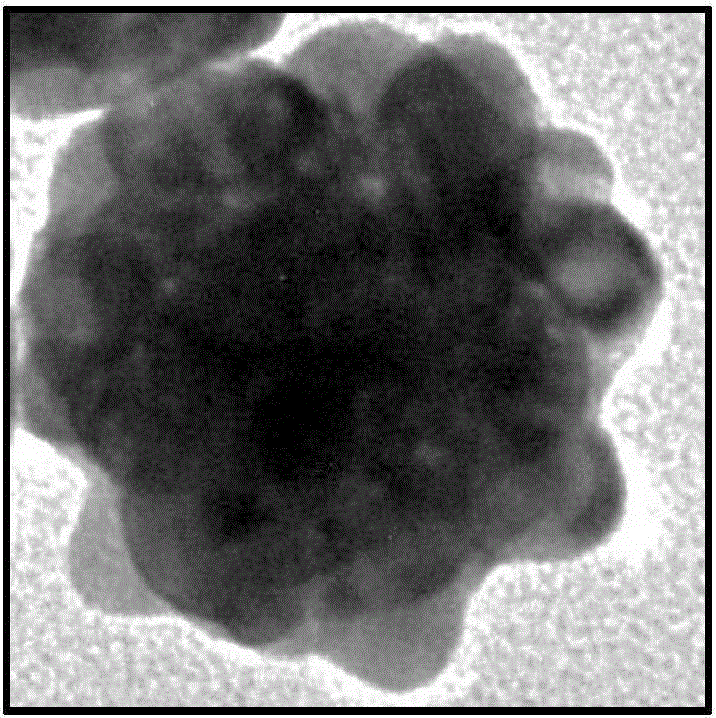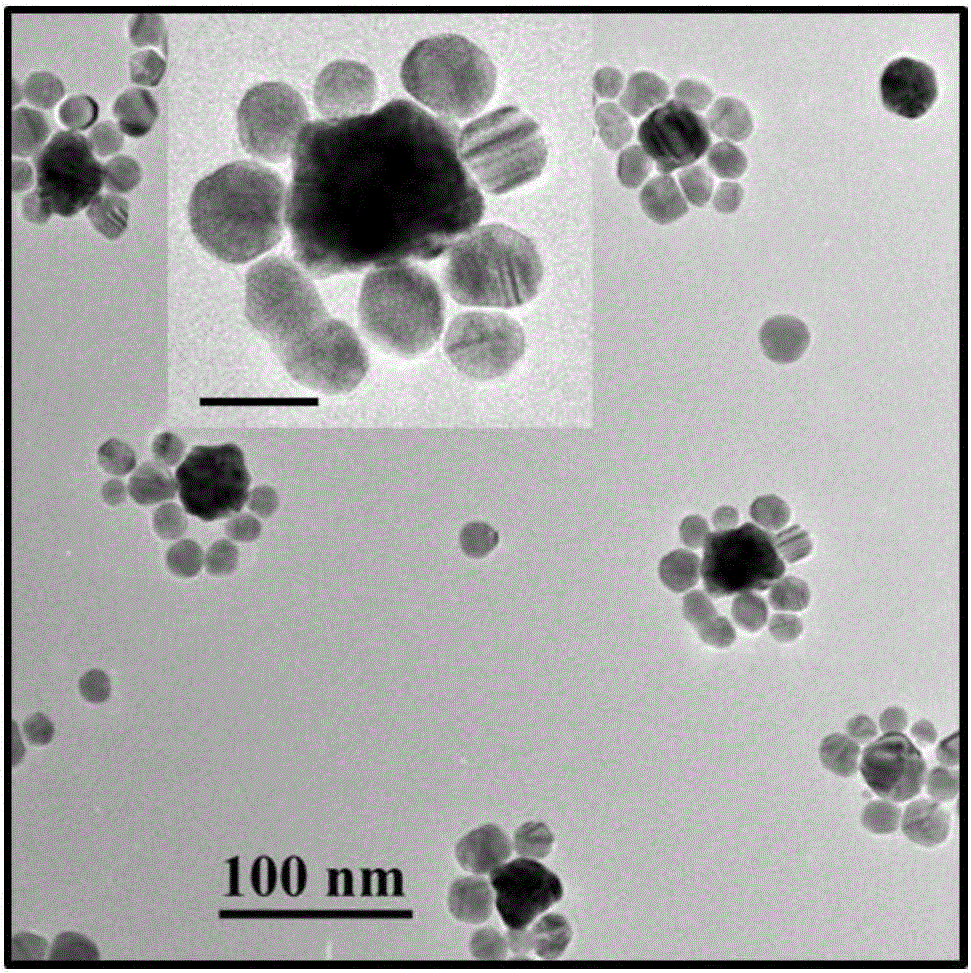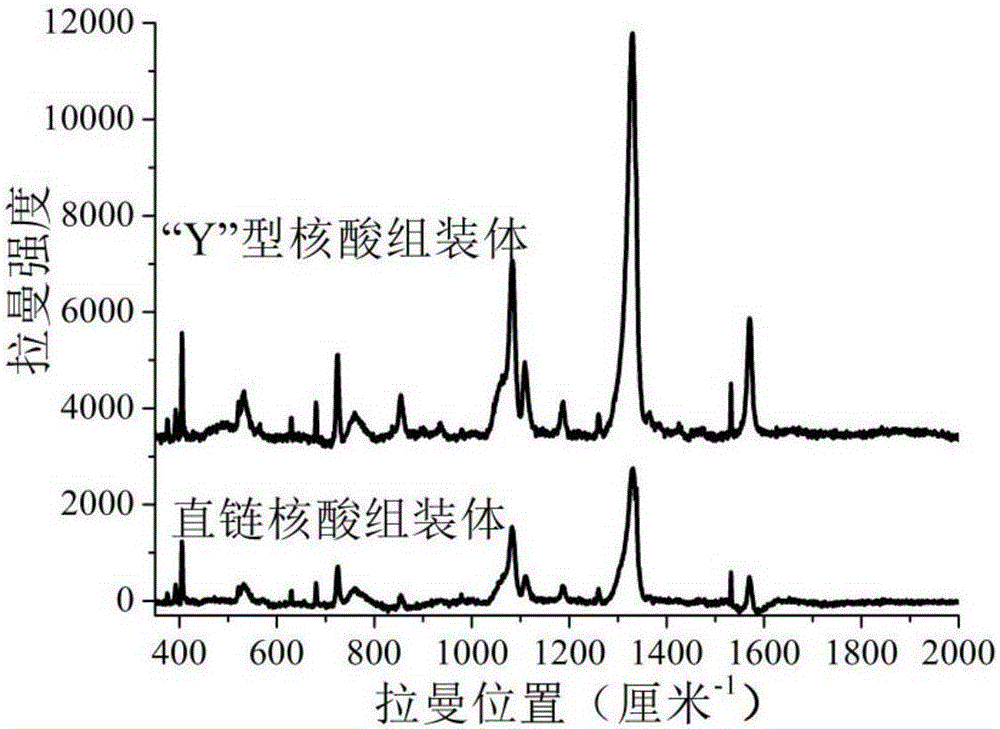Construction of algal toxin Raman sensor adopting gold nanoflower-silver nanoparticle bimetallic nano assembly
A technology of silver nanoparticles and bimetallic nanometers, applied in Raman scattering, material excitation analysis, etc., can solve the problems that the detection of algal toxins has not yet been established, and achieve the rapid effect of algal toxins
- Summary
- Abstract
- Description
- Claims
- Application Information
AI Technical Summary
Problems solved by technology
Method used
Image
Examples
Embodiment 1
[0023] (1) Synthesis of gold nanoflowers
[0024] Add 1.25mL of 5mM chloroauric acid solution into 23.75mL of ultrapure water, mix well, heat rapidly to boiling, and vigorously stir for 5min under boiling conditions. Quickly add 500 μL of freshly prepared sodium citrate with a mass fraction of 1%, and react for 10 minutes. Under vigorous stirring, 500 μL of the above solution was quickly added to the mixed system of 500 μL of 1% polyvinylpyrrolidone and 1 mL of 0.1M phosphate buffer solution, and 300 μL of 10 mM chloroauric acid solution and 300 μL of 10 mM hydroxylamine hydrochloride solution were added. After reacting for 2 h, the mixture was centrifuged at 5000 rpm for 5 min, and the precipitate was dissolved in 100 μL of ultrapure water.
[0025] (2) Surface modification of gold nanoflowers and silver nanoparticles
[0026] Take 100 μL of the gold nanoflower solution prepared above, add 10 μL of 10 μM thiol-modified probe 1, and the molar ratio of gold nanoflower and pro...
PUM
 Login to View More
Login to View More Abstract
Description
Claims
Application Information
 Login to View More
Login to View More - R&D
- Intellectual Property
- Life Sciences
- Materials
- Tech Scout
- Unparalleled Data Quality
- Higher Quality Content
- 60% Fewer Hallucinations
Browse by: Latest US Patents, China's latest patents, Technical Efficacy Thesaurus, Application Domain, Technology Topic, Popular Technical Reports.
© 2025 PatSnap. All rights reserved.Legal|Privacy policy|Modern Slavery Act Transparency Statement|Sitemap|About US| Contact US: help@patsnap.com



